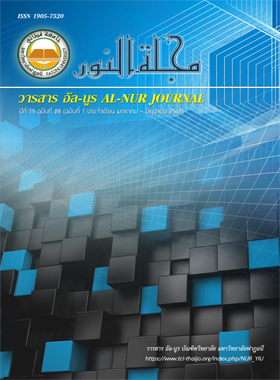TABUNG HAJI and Hajj Performance Sustainability in Malaysi
Keywords:
hajj,, Muslims,, Tabung Haji, sustainabilityAbstract
This qualitative research is aimed at (1) investigating the structure and the management of the Malaysian Tabung Haji; and (2) exploring factors in hajj performance sustainability. According to the findings, the Malaysian Tabung Haji is a financial institution officially established by the government under the Tabung Haji Act 1995, and an essential tool for enhancement of Malaysia’s hajj management quality. The Tabung Haji is like an institution providing fundamental public utilities to the national Muslim populations and encouraging engagement through money saving. This causes the strength and the people trust. The fund also encourages and promotes people’s accessibility to hajj performance due to great success in generating halal income, leading people’s trust and engagement resulting in hajj performance sustainability in Malaysia.
References
Aiza Maslan@Baharudin. (2014). Hajj and the Malayan Experience, 1860s – 1941. Kemanusiaan Vol.21 No. 2, pp.79-98
Habibah Yahaya & others (2016). Tabung Haji Malaysia as a world role model of Islamic management institutions. International Journal of Business and Management Invention, V.5 issue 11; pp-44-55
M. Kamal Hassan (2011). Voice of Islamic Moderation from the Malay World. Perak, Emerging Markets Innovative Research. p.108
McDonnell, M.B. (1986). The conduct of Hajj from Malaysia and its socio-economic impact on Malay society: A descriptive and analytical study, 1860-1981. PhD dissertation; Columbia University
Mohammad Abdul Mannan.(1996). Islamic Socioeconomic Institutions and Mobilization of Resources with special reference to hajj Management of Malaysia. Islamic research and training institute Islamic development Bank, Research paper no. 40
Mohammad Redzuan Othman (2003). Menyahut Panggilan Kaabah: Sejarah Pemergian Orang Melayu Ke Tanah Suci. Jurnal Usuluddin, Bil 18 [2003] 175-198
Peter Riddell (1989). Earliest Quranic Exegetical Activity in the Malay-Speaking States. Archipel, No. 38, h. 110-111.
Roff, W.R. (1982). Santation and Security: the imperial powers and the nineteenth century Hajj. In Arabian Studies IV. London: Scorpion Communications
Syeikh Omar Basheer. n.d. Buku catatan peribadi Syeikh Omar Basheer dengan merujuk terhadap rusuhan di Pulau Pinang pada (1867). Muzium Negeri Pulau Pinang, Pulau Pinang. Malaysia.
ออนไลน์
Tabung Haji. (2016). “Annual Report 2016” จาก https://cms-th.s3.amazonaws.com/Lembaga+Tabung+Haji+Annual+Report+2016.pdf
Tabung Haji (2018). “Zakat Payment” จาก https://www.tabunghaji.gov.my/en/corporate/corporate-information/5-year-data-statistic
Tabung Haji (2018). “Hajj Data & Statistic” จาก https://www.tabunghaji.gov.my/index.php/en/hajj/general-info/hajj-data-statistic
Tabung Haji (2018). “Total number of depositors & deposit” จากhttps://www.tabunghaji.gov.my/en/savings/general-info/data-statistic
Tabung Haji (2018) “Organization Chart” จาก https://www.tabunghaji.gov.my/index.php/en/corporate/organization-structure/organization-chart
Tabung Haji (2018) “About us” จาก https://www.tabunghaji.gov.my/index.php/en/corporate/corporate-information/about-us
Tabung Haji (2018). “Penubuhan Lembaga Tabung Haji” https://www.tabunghaji.gov.my/index.php/ms/korporat/maklumat-korporat/tentang-kami
World Economic Forum (2018) “the Global Competitiveness Index 4.0 2018 Rankings” จาก



